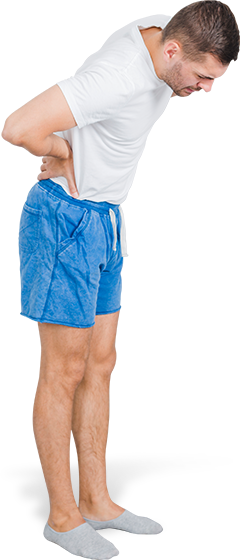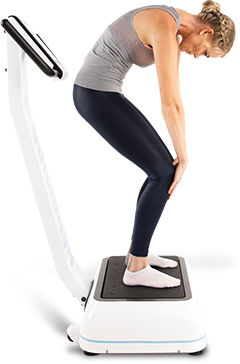While injuries or accidents can cause low back pain, low back pain is also due in part to the aging process and the result of sedentary lifestyles combined with too little exercise. The low back is a complicated structure of bones, joints, ligaments and muscles. You can sprain ligaments, strain muscles, rupture disks, and/or irritate joints, all of which can lead to low back pain. In addition, arthritis, poor posture, obesity, and psychological stress can cause or complicate low back pain.

A growing number of studies1,2,3,4 (not too mention thousands of anecdotal reports!) suggest that, in the words of veteran Whole Body Vibration researcher Jörn Rittweger, “…well controlled vibration may be the cure rather than the cause of lower back pain.”
How could this be, you ask?

Over time, this can literally transform your nervous system and provide long term relief from chronic low back pain, as well as the sensitivity you have developed while living with this difficult condition.
Hypervibe produces pivotal vibration, which causes the pelvis to rotate and as a result, engages the muscles of the lower back and trunk. Combined with Hypervibe’s full range of frequency and highest g force levels for the money, this makes Hypervibe the best choice machine for lower back therapy.
To find out why Hypervibe is the brand trusted by chiropractors, rehabilitation clinics and physical therapists around the world.